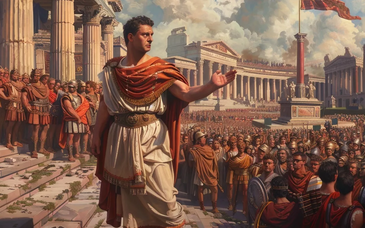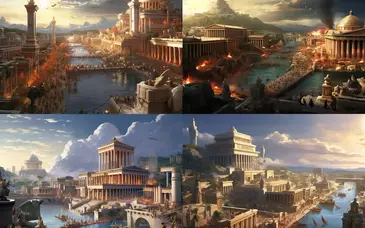In the heart of ancient Rome, the winter solstice was not only a celestial event but a time of unparalleled revelry and festivity. Saturnalia, a pagan festival dedicated to the god Saturn, transformed the city into a realm of merriment, freedom, and communal joy. Join us as we delve into the enchanting world of Saturnalia, exploring its origins, traditions, and the vibrant spirit that illuminated the darkest days of winter.
1. Origins and Significance: Saturnalia, rooted in the agricultural rhythms of ancient Rome, celebrated the winter solstice, marking the return of longer days and the promise of spring. Dedicated to Saturn, the god of agriculture and plenty, the festival was a time of gratitude for the bounties of the harvest.
2. Duration and Rituals: The festivities of Saturnalia extended for a week, typically from December 17 to 23. During this time, social norms were upended as Romans engaged in rituals such as the exchange of gifts, feasting, and public banquets. Masters served their slaves, and a temporary suspension of social hierarchies prevailed.
3. Feast of Saturn: Central to Saturnalia was the grand Feast of Saturn, a lavish banquet where tables groaned under the weight of sumptuous offerings. Sacrifices, often symbolic, were made to Saturn, and participants indulged in a culinary abundance that mirrored the god's association with prosperity.
4. Role Reversals and Merriment: One of the defining features of Saturnalia was the temporary inversion of social roles. Slaves became masters, and a Lord of Misrule, known as the Saturnalicius princeps, presided over the revelry. This topsy-turvy atmosphere allowed Romans to revel in a world of liberated merriment.
5. Gift-Giving Traditions: Exchanging gifts during Saturnalia symbolized goodwill and generosity. Small tokens of affection, known as "sigillaria," were exchanged, and it was customary to offer candles, figurines, or other trinkets as a token of friendship. This tradition echoes in modern-day gift exchanges during the holiday season.
6. Decorations and Illumination: Homes and public spaces were adorned with greenery, including wreaths, garlands, and candles. The illumination of candles symbolized the return of light during the darkest days of winter, infusing the city with a warm and radiant glow.
7. Legacy and Influence: While Saturnalia was absorbed into and transformed by later Roman religious traditions, its influence is evident in some aspects of modern Christmas celebrations. The spirit of joy, gift-giving, and communal festivities found in Saturnalia echoes through the centuries.
Saturnalia, with its enchanting blend of merriment and ancient spirituality, illuminated the Roman winter with a radiant celebration of light, generosity, and communal harmony. As we glimpse into this pagan festival, we recognize the enduring human desire to embrace warmth and joy during the coldest and darkest days, transcending time and cultural boundaries.





